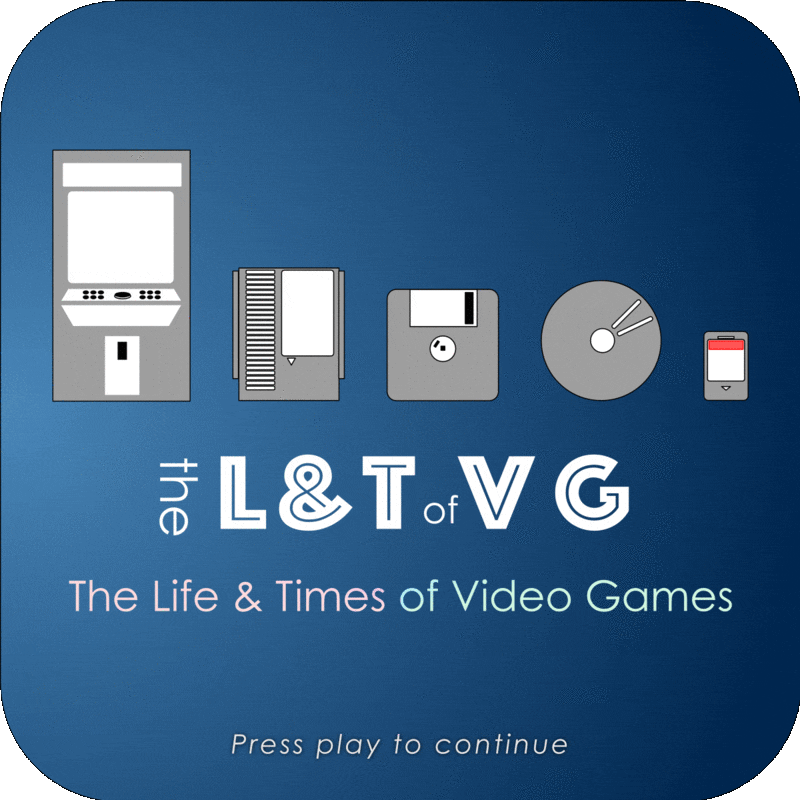Soundbite: Don Daglow on life at Mattel in the early days of the Intellivision
27 Nov 2020 — Filed in: Soundbites | Season 4
Click/tap here to download this episode.

(If you don't see the player above, it means your browser is blocking my podcast host Megaphone. If that's the case you can listen by downloading the mp3, turning off your adblocker, whitelisting all megaphone.com subdomains, or loading it up in your favourite podcast app. I'm sorry about the inconvenience, but there's nothing I can do about it until Megaphone either improves its privacy performance or I switch to a new host — which I'd rather not do just yet.)
To learn more about Don Daglow and his mega-influential game Utopia, be sure to listen to episode 29, 'Utopia, and the teacher who made a game of its impossibility'.
You can support The Life and Times of Video Games by sharing your favourite episodes with others and by making a donation, either in the form of a one-off payment via paypal.me/mossrc or a recurring payment (with some reward perks!) via patreon.com/lifeandtimesofvideogames
Transcript
This is a Life and Times of Video Games soundbite. I'm Richard Moss.
The early years of the American video game industry were defined in large part by a war between two huge companies: the market leader Atari, and the deep-pocketed upstart Mattel — which was trying to shoehorn its way into this exciting new category of electronic plaything.
But the two companies could scarcely have been farther apart in their internal cultures. Atari was famous for its view that game developers were just cogs in a machine, no more important than the people who work on the assembly floor, but game creation, all the same, was the centrepiece of their operations. Mattel had a different vibe, as Don Daglow found out when he arrived on day one of operations for the new in-house Intellivision software unit in 1980.
Here he is talking about Mattel's culture and atmosphere in those early days.
***
Don Daglow: You know, Atari was in many ways a purpose-built game company Ted Dabney and Nolan Bushnell had built originally to do coin-op and then to do machines. Mattel was one of the largest, and is one of the largest, toy companies in the world. But back then, that was normal. Video games were seen as toys. It was toy stores where they were sold. And so. Mattel saw that, as you know, this looked like a good segment, they had to have an entry in that segment, but they wanted to add a quality entry because their brand was Assoc — they were not a cut-rate brand. They were associated with being a quality brand. And Hot Wheels and the Barbie dolls were their two biggest lines. Barbie, most of all.
And so they had the existing toy company and electronics was made a separate division within the company. And so all of the infrastructure, the big office building, everything like that, was already given over to the toy company. And so for electronics, our first offices were in a warehouse. So it's been torn down now. But Mattel at that time had a — I think it was a six storey office tower near the Los Angeles International Airport. And I mean, five minutes from the airport. And then they had sprawling warehouses and factories that were adjacent to that that had been built in the 1950s and the 1960s. And so come 1980, some of that space was being subleased out because they had already taken a lot of their manufacturing overseas. Even then, 40 years ago, so a lot of manufacturing was done in Hong Kong. I think some was in Mexico, I think some may have been in Taiwan.
And so some of that space was still being used by Mattel for warehousing and operations, some was being used — some had been subleased, I think, to Northrop Grumman, which is an aircraft company. So there would be pieces of aircraft wings outside in the back. There was an old Hot Wheels factory in the back that had been used to make toy cars, that had been decommissioned for that and that I think somebody else was subleasing.
And so we were put in the remaining big warehouse that was adjacent to the office tower, so we would walk in in the morning, the security guards would check your security clearance and I.D. — because industrial espionage at that point certainly was a very real thing in the toy business. And so if you were from the toy company, you turned left and you went up the elevator in the six story office building. If you were part of our little electronics group in the Mattel — the handheld games came out of the same division in electronics, the ones with the little LEDs that blinked for American football and baseball and other sports. Those games were also off of that same division.
So anybody in electronics turned right. You went through double doors, and you were in a big hallway in this warehouse and big forklifts would be coming through (laughs) because it was still a working warehouse. And so if they saw you walking down the hallway and they were approaching, they'd go (mimics horn sound) with the horn in their forklift because — at least, they believed — they had the right away. And our job was to get out of their way. Their job was not to avoid us. Our job was to avoid them. Which we very quickly figured out. (laughs) You'd walk down a hallway, and then on our right, there were eight-foot high plywood walls that had some kind of connection, obviously, to the floor and so on. And you'd open a door in there and you would go into this open area that was — what would be the size of that would be easy to describe? It was the size of a medium-sized restaurant, including the back kitchen area — was the size of it. And we were told that only like three weeks before we got there — before it had been open with desks. And it had probably space for 30 people in very small cubicles — by today's standards, it would be small cubicles.
And the cubicles had only come in about three weeks before. Before that had just been desks. And those were some engineers, industrial designers — people associated with the handheld games were the ones already there. And so we were mixed in with them, since we were the next growth area in electronics. But the warehouse walls, the warehouse ceiling was like 20 feet high. And our warehouse — our walls — were eight feet high. So you still heard everything going by in the hallway in our little area. You still heard the forklifts and stuff like that.
The good part of this was across the hallway and across far away down from the main hallway was the toy testing lab where they would take new Mattel toys and test them to make sure that if you had a talk and tell educational toy that would teach you numbers of the alphabet, that you could pull the string on it a thousand times and it would still go 'C. C is for Cat.' Because, you know, high quality brand, you want to be reliable. And then once they had done this, they couldn't sell these very used toys in the company store. Which had wonderful discounts and we all had access to. So what they did is they had a dumpster in the side hallway, which will tell you how big the side hallway was — it could have a dumpster in it and the forklifts could still go by it.
And so they would come out when they finished tests. They knew the people would do dumpster dives if they just threw the toys in there. All the employees knew where it was and they would do dumpster dives to take toys home to their kids. So what they had been told to do is they put on safety glasses and so they would take out — (visually illustrates) here's the tested toy and they would take it out and they would take it and they would smash it. It's cutting off. I'm using my phone is my problem. They go whack, whack, whack on the side of the dumpster until it broke. And then they throw the broken pieces in the dumpster so nobody can take it home and then say, I've got a substandard Mattel toy. Why did it wear out so fast? Well, it's because it was tested a thousand times. So they smashed them so that could happen.
But of course, part of the company culture, as we quickly found out, was we heard before anybody else did when stuff was being smashed on the dumpster — because it sounded like somebody smashing toys, you know, 20 feet from your office because they were 20 feet from some of our offices. And so we would be the first ones to go out. We had another doorway out of the area. And it was right next to the dumpster, so we would wait for them to finish and then we kind of wait for the door to close. Wait for it to die down for a moment. And then (laughs) we'd go running out the door — especially those of us who had young kids would go running out the door and go look and see, you know, if you're not in a meeting or something and go, OK, I can lean in. Oh, I got this I got that.
Because the toys were well-made and a lot of times they would try and smash them but they wouldn't succeed. And you'd take home an actual functioning beat-up toy, your kid. And it was free. And back in those days, you know, we weren't getting paid — you know, compared to what modern engineers make per capita and adjusted for inflation, we weren't making anywhere near that kind of money. And so getting something for free for your kids was — you know, that was a cool thing.
So that gives you some idea of that. But then the culture was very much of well we know what the product line is, what would be — what would you like to make? What you think you could make well? And that isn't repeating of something in our line, that somehow expands the diversity of our lines. So we got to pitch.
***
You can hear more about Don's time at Mattel in episode 29, Utopia, which covers the creation of one of the most-influential games ever made, as well as Don's long journey to make it.
I'll be back soon with episode 30, which delves into a key moment in the life of another game design luminary, Chris Crawford, but in the meantime you can find all my past episodes in your favourite podcast app or via my website, lifeandtimes.games.
And you can support me financially, so that I can dedicate more time to this show and less time to freelancing, by making a donation on paypal at paypal.me/mossrc, or by subscribing to my Patreon, at patreon.com/lifeandtimesofvideogames.
Until next time, my name is Richard Moss. Thanks for listening. See ya.
.


